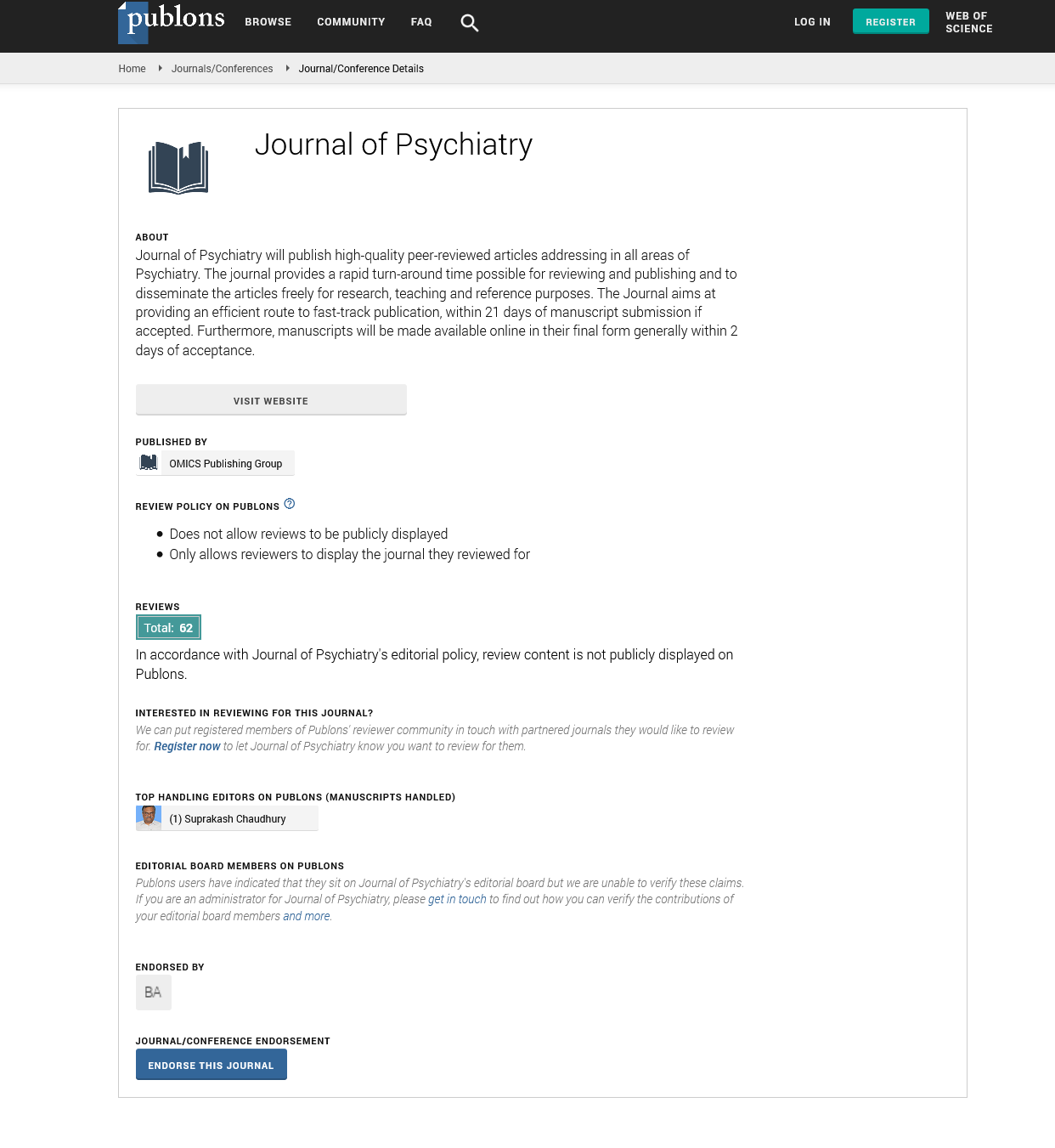Indexed In
- RefSeek
- Hamdard University
- EBSCO A-Z
- OCLC- WorldCat
- SWB online catalog
- Publons
- International committee of medical journals editors (ICMJE)
- Geneva Foundation for Medical Education and Research
Useful Links
Share This Page
Open Access Journals
- Agri and Aquaculture
- Biochemistry
- Bioinformatics & Systems Biology
- Business & Management
- Chemistry
- Clinical Sciences
- Engineering
- Food & Nutrition
- General Science
- Genetics & Molecular Biology
- Immunology & Microbiology
- Medical Sciences
- Neuroscience & Psychology
- Nursing & Health Care
- Pharmaceutical Sciences
Abstract
Magnitude of Psychoactive Substance Abuse among University Students, Adigrat, North Ethiopia: Cross Sectional Study
Tilahun Belete Mossie, Gebrewahd Bezabh Gebre Michael and Ashenafi Damte Ayele
Background: Substance abuse is a serious problem that interferes with an individual's physical and mental health, on the individual social situation and responsibilities. Of the young segment of the Ethiopian population, college and university students are the most at risk of using psychoactive substances. Its use among adolescents can be harmful, leading to decreased academic performance, increased risk of contracting HIV/AIDS including sexually transmitted diseases, and psychiatric disorders. Hence a need to conduct studies in this issue is fundamental and with the aim of determining the magnitude of psychoactive substance use among University students at Adigrat, this investigation was conducted.
Methodology: An institution based cross sectional study design using quantitative method was employed on 161 students; and after stratifying for department and batch, systematic random sampling was used to select study subjects. The study period was from April 1 to June 20, 2014. Data was gathered by anonymous self-administer questionnaire using ASSIST and CAGE tools; also abuse was determined at a score of ≥ 2 on CAGE.
Result: The magnitude of substance abuse was 16.7%. The commonly abused substances were alcohol (8.7%) followed by Khat (6.7%); and cigarettes were abused by 6% of the participants. Comparably 3.33% and 2% were cannabis and cocaine abusers respectively. Peer pressure 29 (34.52%), family pressure 25 (29.76%), availability of the substances 17 (20.24%), including religious purpose 3 (3.57%) were common reasons to initiate extracting substances. In addition nearly half of them started using substances at the primary school level.
Recommendation: It is important to design suitable policies, culturally and psychologically appropriate intervention packages so as to tackle multiple effects of psychoactive substance abuse among University students.

